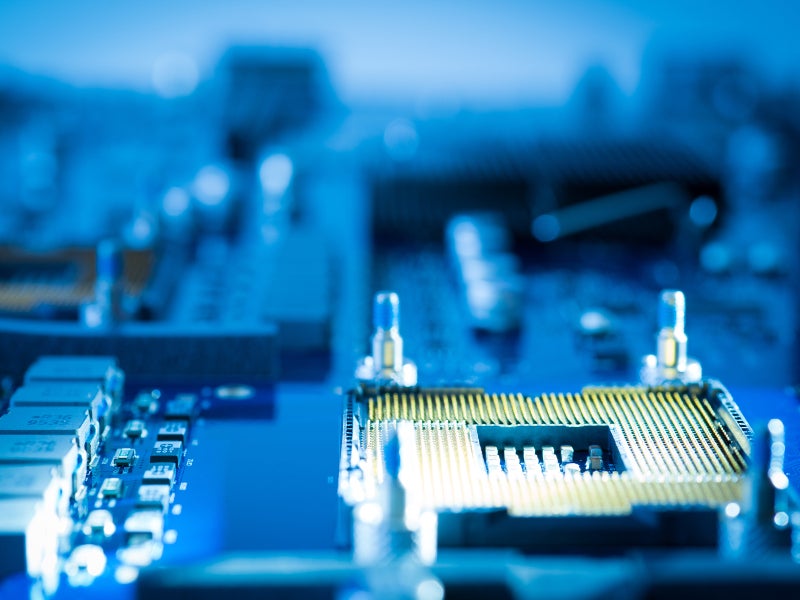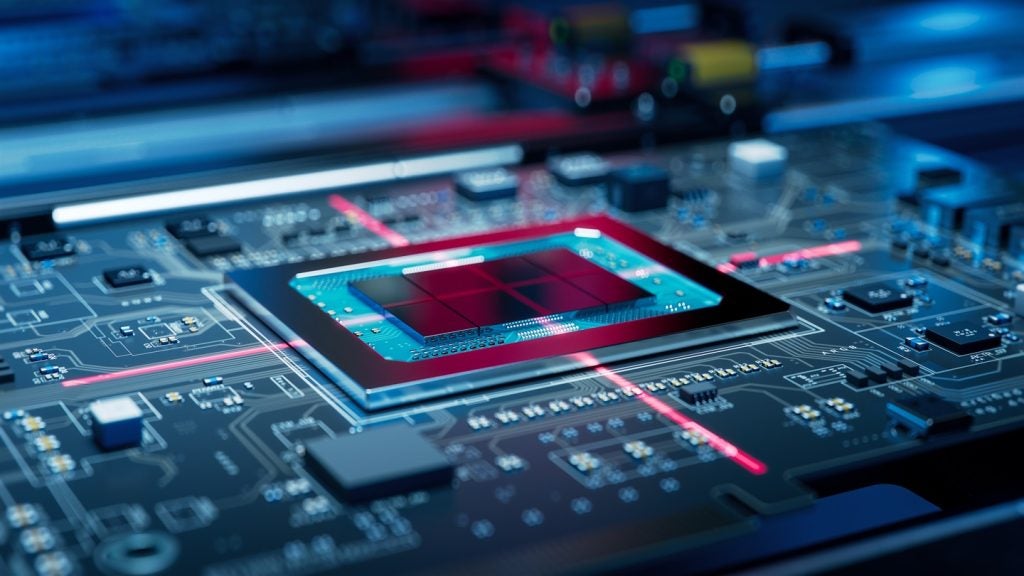![]()
The central challenge of the industry is to process huge volumes of data a lot faster. It needs to be done using a much lower power draw per bit stored, processed, and moved. As more processing is pushed to the edge, the data from cars, robots, drones, and smart appliances will increasingly be processed in-device. This distributed model will help reduce network congestion and cyber threats.
Listed below are the top semiconductor and chip technology trends, as identified by GlobalData.
Industry growth
2019 proved grisly after the surging growth of the previous two years. The main problems are best understood in the context of uncertainty caused by the US-China trade war. Additionally there is overcapacity in the memory sector, lacklustre demand for processors at the world’s data centres, and flattening smartphone sales.
Overall, the industry will do well to grow by more than 4% in 2020. The outlook for advanced processors is not encouraging as data centre spending is only likely to show modest growth. Moreover, smartphone makers are likely to experience sluggish sales growth of 3% in 2020.
AI and algorithmic chips
AI systems need to process massive amounts of data quickly. The performance of general-purpose chips has improved sufficiently to kick-start a new generation of AI technology. However, they cannot keep up with the exponential increase in the volume of data that AI systems process. This has given rise to the advent of hardware-based acceleration via algorithmic-specific chips such as field-programmable gate arrays (FPGAs) and graphics processing units (GPUs).
There is a high degree of specialisation among acceleration chip architectures. This specialisation and the popularity of AI itself have led to an arms race among chip manufacturers. They are seeking to solve AI problems on mobile devices, at the network edge, in the data centre, and on the public cloud platform.
How well do you really know your competitors?
Access the most comprehensive Company Profiles on the market, powered by GlobalData. Save hours of research. Gain competitive edge.

Thank you!
Your download email will arrive shortly
Not ready to buy yet? Download a free sample
We are confident about the unique quality of our Company Profiles. However, we want you to make the most beneficial decision for your business, so we offer a free sample that you can download by submitting the below form
By GlobalDataIoT
The tsunami of real time data that will be spewed out by the IoT is driving significant research into new chip architectures, and materials, along with areas like silicon photonics. An increasing number of IoT devices will be armed with their own microcontrollers and analytics to make them less vulnerable. Cybersecurity will be vital to autonomous vehicles, factory and consumer robots, and drones..
Autonomous vehicles (AVs)
Modern vehicles with advanced driver-assistance systems features are networked supercomputers on wheels. Semiconductors will deliver 80% of the innovation required to move the industry to fully autonomous Level 5 vehicles.Given that most original equipment manufacturers (OEMs) have already decided on the main partners, the next couple of years will see competition intensify for design wins with the key OEMs.
RISC-V
The RISC-V Foundation now has over 300 active members, which are exploring the scope for developing open-source, license fee and royalty payment-free RISC processor templates for a wide range of applications. RISC-V is gathering momentum, but still has a long way to go.
The next two years will see the brisk adoption of RISCV. In 2020 it will probably be determined whether RISCV, can be fully exploited in China. Alibaba’s RISC-V based developments in IoT and inferential chips were accomplished before the block on US exports to Huawei.
Chip security
The deployment of IoT devices significantly expands the potential attack surface for increasingly sophisticated state and private cyber attackers. The Meltdown and Spectre scandals of 2018 exposed chips’ weaknesses to cyberattack. Telecom companies could benefit from the association of 5G and VR. Telecom players are already investing in VR/AR, either through partnerships or in-house initiatives.
Over the next two years we expect only marginal progress. The industry must tighten security across the supply chain, including testing and packaging services, foundries, equipment makers and electronic design automation (EDA) suppliers.
In-house chip design
The tech giants are under increasing pressure to differentiate themselves. Consequently, they are abandoning traditional suppliers such as Intel and Qualcomm in favour of their own proprietary designs.The world will continue to move from general purpose processors to specific, precisely tailored hardware focused on software and algorithm optimisation. The tech giants will increasingly design chips in-house, as they seek to control the computational architecture of their different services.
Foundries
Independent foundries will receive a boost from the profusion of design-only companies and from the tech giants designing their own chips. There is a big question mark over what China can achieve in advanced chip making over the next five years.
The world is expected to spend $50bn on new foundry projects over the next couple of years, with half earmarked for China. Foundries will continue to be challenged by the shrinking size of transistors, the increasing height of 3D stacked architectures deployed beyond Flash memories, and standard functional chiplets being designed into application-specific chip sets.
This is an edited extract from the Tech, Media, & Telecom Trends 2020 – Thematic Research report produced by GlobalData Thematic Research.









Related Company Profiles
Qualcomm Inc
Intel Corp